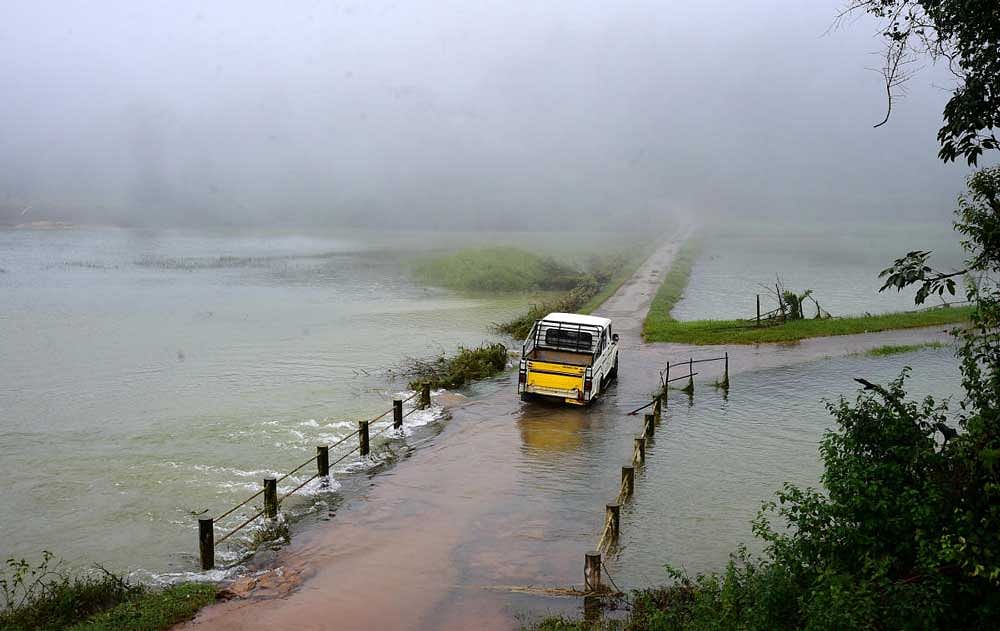
A week after rains ravaged the Kodagu landscape, experts from meteorology and climate change areas have begun to connect the dots unravelling the actual reason behind the rain mayhem.
While the district has received the highest rainfall in the last 64 years according to weather experts, scientists from Indian Institute of Science (IISc) have attributed the damages to large-scale destruction of natural vegetation in the name of development in the last four decades.
A detailed study carried out by the scientists of IISc’s Centre for Ecological Sciences (CES) across Kodagu, especially in the catchment areas of Cauvery’s tributary Lakshmanateertha, has revealed that rampant degradation of vegetation and adoption of monoculture plantation method to compensate for the loss of vegetation has resulted in repeated landslides, flash floods.
“The dense vegetation across Kodagu which was over 50% four decades ago has come down to less than 17-18 per cent in recent times. Paving way for development projects like railways, roads and electricity lines, vegetation was cleared on a large scale. The damage that was done in the four decades has begun to show results now,” said Dr T V Ramachandra, professor, CES.
According to Ramachandra, the vegetation not only held the topsoil intact but also retained rainwater to be released later. “With the clearing of vegetation, there is nothing to hold back the topsoil which has been currently washed away.
“The muddy water in rivers Lakshmanteertha and Cauvery is a testimony to the fact that there is hardly any vegetation. All the landslides have happened wherever the native vegetation was cleared for road, agricultural purposes and other activities,” he said.
The remote sensing imageries and GIS data revealed that about 62% of the landscape along Lakshmanteertha was dominated by agriculture and horticulture with no mechanism to stop surface run-off of the rainwater.
‘Roots help bind soil’
“Wherever there is forest, there is hardly any surface runoff and water has percolated into the ground. The roots of the vegetation bind the soil and do not allow it to run off. It is only where there are agricultural and plantation activities that flash floods and landslides are witnessed. If the government does not crack the whip on commercial exploitation of land or on diverting it for projects like roads, railways and energy, catastrophes like this are bound to happen,” he said.
Ravaged terrain across Kodagu has posed a challenge to meteorological experts of the Karnataka State Natural Disaster Monitoring Cell (KSNDMC) in assessing the actual quantity of rain in Kodagu. Even though the rains have caused immense damage, all rain sensors have been functional, said KSNDMC. According to Dr G S Sreenivasa Reddy, director of KSNDMC, Kodagu has witnessed the highest rainfall in 64 years.
“The last highest rainfall was in 1965 when the district received 149% more rainfall than normal. Now, the district has received 103% more than the normal rainfall,” he said.
